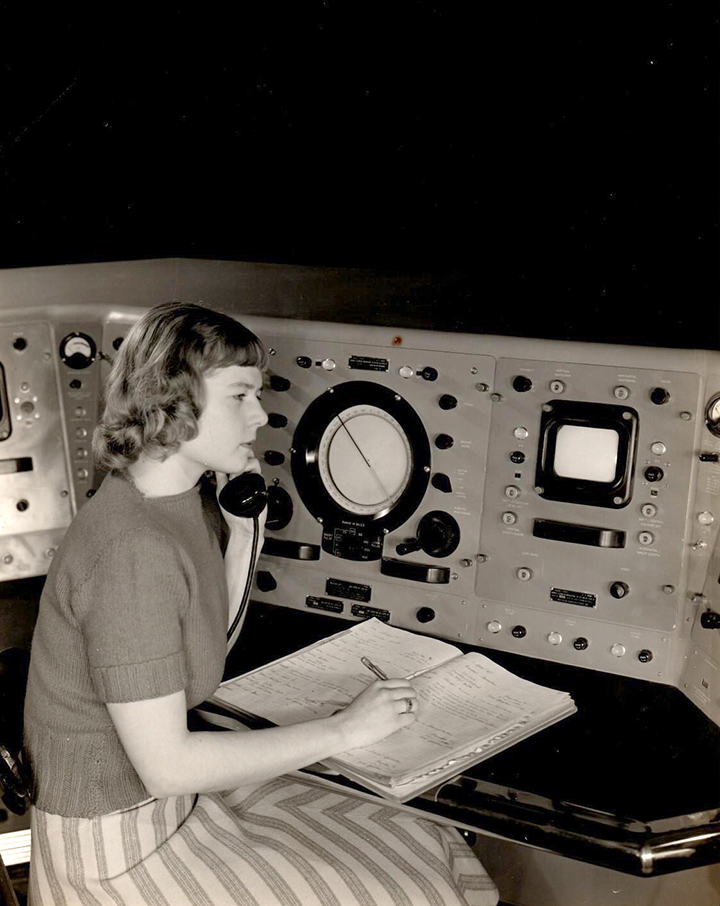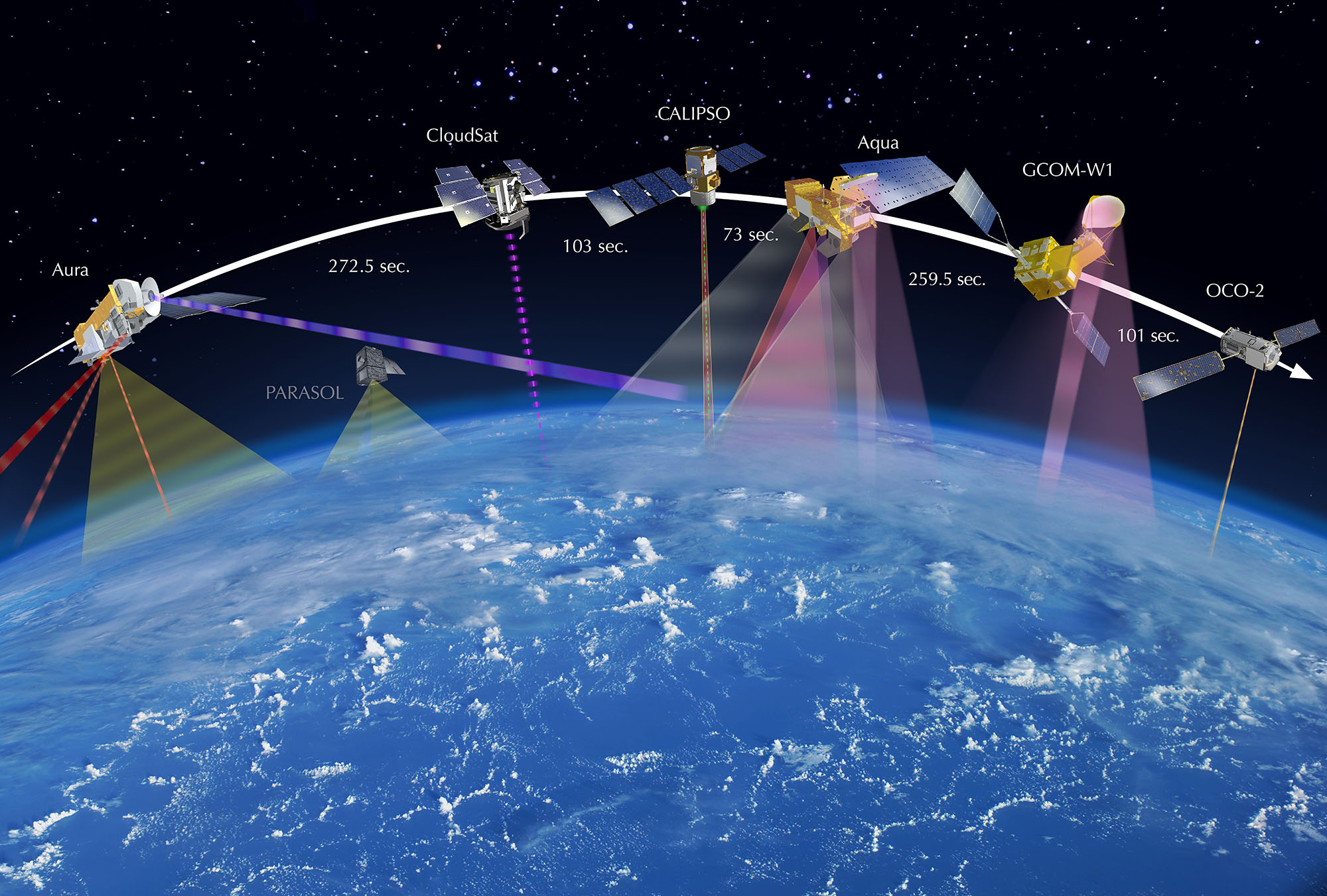|
Landsat 9
Landsat 9 is an Earth observation satellite launched on 27 September 2021 from Vandenberg Space Launch Complex 3, Space Launch Complex-3E at Vandenberg Space Force Base on an Atlas V , Atlas V 401 launch vehicle. NASA is in charge of building, launching, and testing the satellite, while the United States Geological Survey (USGS) operates the satellite, and manages and distributes the data archive. It is the ninth satellite developed in the Landsat program, and eighth to reach orbit (Landsat 6 failed to reach orbit). The Design review (U.S. government), Critical Design Review (CDR) was completed by NASA in April 2018, and Northrop Grumman Innovation Systems (NGIS) was given the go-ahead to manufacture the satellite. Design The design and construction of Landsat 9 were assigned by NASA, under a delivery order contract to Northrop Grumman Innovation Systems, Orbital ATK, in October 2016. The purchase cost of US$129.9 million is part of a five-year contract between the two enti ... [...More Info...] [...Related Items...] OR: [Wikipedia] [Google] [Baidu] |
Landsat 10
The Landsat program is the longest-running enterprise for acquisition of satellite imagery of Earth. It is a joint National Aeronautics and Space Administration, NASA / United States Geological Survey, USGS program. On 23 July 1972, the Landsat 1, Earth Resources Technology Satellite was launched. This was eventually renamed to Landsat 1 in 1975. The most recent, Landsat 9, was launched on 27 September 2021. The instruments on the Landsat satellites have acquired millions of images. The images, archived in the United States and at Landsat receiving stations around the world, are a unique resource for global change research and applications in agriculture, cartography, geology, forestry, regional planning, surveillance and education, and can be viewed through the U.S. Geological Survey (USGS) "EarthExplorer" website. Landsat 7 data has eight spectral bands with Image resolution#Spatial resolution, spatial resolutions ranging from ; the temporal resolution is 16 days. Landsat ima ... [...More Info...] [...Related Items...] OR: [Wikipedia] [Google] [Baidu] |
Landsat 9 On July 12th, 2021 At Vandenberg Space Force Base, California
The Landsat program is the longest-running enterprise for acquisition of satellite imagery of Earth. It is a joint NASA / USGS program. On 23 July 1972, the Earth Resources Technology Satellite was launched. This was eventually renamed to Landsat 1 in 1975. The most recent, Landsat 9, was launched on 27 September 2021. The instruments on the Landsat satellites have acquired millions of images. The images, archived in the United States and at Landsat receiving stations around the world, are a unique resource for global change research and applications in agriculture, cartography, geology, forestry, regional planning, surveillance and education, and can be viewed through the U.S. Geological Survey (USGS) "EarthExplorer" website. Landsat 7 data has eight spectral bands with spatial resolutions ranging from ; the temporal resolution is 16 days. Landsat images are usually divided into scenes for easy downloading. Each Landsat scene is about 115 miles long and 115 miles wide (or 1 ... [...More Info...] [...Related Items...] OR: [Wikipedia] [Google] [Baidu] |
Earth Observation Satellite
An Earth observation satellite or Earth remote sensing satellite is a satellite used or designed for Earth observation (EO) from orbit, including spy satellites and similar ones intended for non-military uses such as environmental monitoring, meteorology, cartography and others. The most common type are Earth imaging satellites, that take satellite images, analogous to aerial photographs; some EO satellites may perform remote sensing without forming pictures, such as in GNSS radio occultation. The first occurrence of satellite remote sensing can be dated to the launch of the first artificial satellite, Sputnik 1, by the Soviet Union on October 4, 1957. Sputnik 1 sent back radio signals, which scientists used to study the ionosphere. The United States Army Ballistic Missile Agency launched the first American satellite, Explorer 1, for NASA's Jet Propulsion Laboratory on January 31, 1958. The information sent back from its radiation detector led to the discovery of the Earth's Van ... [...More Info...] [...Related Items...] OR: [Wikipedia] [Google] [Baidu] |
COVID-19 Pandemic
The COVID-19 pandemic (also known as the coronavirus pandemic and COVID pandemic), caused by severe acute respiratory syndrome coronavirus 2 (SARS-CoV-2), began with an disease outbreak, outbreak of COVID-19 in Wuhan, China, in December 2019. Soon after, it spread to other areas of Asia, and COVID-19 pandemic by country and territory, then worldwide in early 2020. The World Health Organization (WHO) declared the outbreak a public health emergency of international concern (PHEIC) on 30 January 2020, and assessed the outbreak as having become a pandemic on 11 March. COVID-19 symptoms range from asymptomatic to deadly, but most commonly include fever, sore throat, nocturnal cough, and fatigue. Transmission of COVID-19, Transmission of the virus is often airborne transmission, through airborne particles. Mutations have variants of SARS-CoV-2, produced many strains (variants) with varying degrees of infectivity and virulence. COVID-19 vaccines were developed rapidly and deplo ... [...More Info...] [...Related Items...] OR: [Wikipedia] [Google] [Baidu] |
Kennedy Space Center
The John F. Kennedy Space Center (KSC, originally known as the NASA Launch Operations Center), located on Merritt Island, Florida, is one of the NASA, National Aeronautics and Space Administration's (NASA) ten NASA facilities#List of field centers, field centers. Since 1968, KSC has been NASA's primary launch center of American spaceflight, research, and technology. Launch operations for the Apollo Program, Apollo, Skylab and Space Shuttle Program, Space Shuttle programs were carried out from Kennedy Space Center Launch Complex 39 and managed by KSC. Located on the east coast of Florida, KSC is adjacent to Cape Canaveral Space Force Station (CCSFS). The management of the two entities work very closely together, share resources, and operate facilities on each other's property. Though the first Apollo flights and all Project Mercury and Project Gemini flights took off from the then-Cape Canaveral Air Force Station, the launches were managed by KSC and its previous organization, ... [...More Info...] [...Related Items...] OR: [Wikipedia] [Google] [Baidu] |
Launch Services Program
The NASA Launch Services Program (LSP) is responsible for procurement of launch services for NASA uncrewed missions and oversight of launch integration and launch preparation activity, providing added quality and mission assurance to meet program objectives. LSP operates under the NASA Space Operations Mission Directorate (SOMD). Since 1990, NASA has purchased expendable launch vehicle launch services directly from commercial providers, whenever possible, for its scientific and applications missions. Expendable launch vehicles can accommodate all types of orbit inclinations and altitudes and are ideal vehicles for launching Earth-orbit and interplanetary missions. The Launch Services Program was established at Kennedy Space Center for NASA's acquisition and program management of expendable launch vehicle missions. A NASA/contractor team is in place to meet the mission of the Launch Services Program, which exists to provide leadership, expertise and cost-effective services in the ... [...More Info...] [...Related Items...] OR: [Wikipedia] [Google] [Baidu] |
Landsat 7
Landsat 7 is the seventh satellite of the Landsat program. Launched on 15 April 1999, Landsat 7's primary goal is to refresh the global archive of satellite photos, providing up-to-date and cloud-free images. The Landsat program is managed and operated by the United States Geological Survey, and data from Landsat 7 is collected and distributed by the USGS. The NASA WorldWind project allows 3D images from Landsat 7 and other sources to be freely navigated and viewed from any angle. The satellite's companion, Earth Observing-1, trailed by one minute and followed the same orbital characteristics, but in 2011 its fuel was depleted and EO-1's orbit began to degrade. Landsat 7 was built by Lockheed Martin Space Systems. In 2016, NASA announced it planned to attempt the first ever refueling of a live satellite by refueling Landsat 7 in 2020 with the OSAM-1 mission. However after multiple delays, NASA announced the cancellation of OSAM-1 in March 2024. The mission officially ended in 2 ... [...More Info...] [...Related Items...] OR: [Wikipedia] [Google] [Baidu] |
Stray Light
Stray light is light in an optical system which was not intended in the design. The light may be from the intended source, but follow paths other than intended, or it may be from a source other than that intended. This light will often set a working limit on the dynamic range of the system; it limits the signal-to-noise ratio or contrast ratio, by limiting how dark the system can be. Ocular straylight is stray light in the human eye. Optical systems Monochromatic light Optical measuring instruments that work with monochromatic light, such as spectrophotometers, define stray light as light in the system at wavelengths (colors) other than the one intended. The stray light level is one of the most critical specifications of an instrument. For instance, intense, narrow absorption bands can easily appear to have a peak absorption less than the true absorption of the sample because the ability of the instrument to measure light transmission through the sample is limited by the ... [...More Info...] [...Related Items...] OR: [Wikipedia] [Google] [Baidu] |
Goddard Space Flight Center
The Goddard Space Flight Center (GSFC) is a major NASA space research laboratory located approximately northeast of Washington, D.C., in Greenbelt, Maryland, United States. Established on May 1, 1959, as NASA's first space flight center, GSFC employs about 10,000 civil servants and contractors. Named for American rocket propulsion pioneer Robert H. Goddard, it is one of ten major NASA field centers. GSFC is partially within the former Goddard, Maryland, Goddard census-designated place; it has a Greenbelt, Maryland, Greenbelt mailing address.CENSUS 2000 BLOCK MAP: GODDARD CDP (PDF). U.S. Census Bureau. Retrieved September 1, 2018. 1990 Census map of Prince George's County [...More Info...] [...Related Items...] OR: [Wikipedia] [Google] [Baidu] |
Ground Sample Distance
In remote sensing, ground sample distance (GSD) in a digital photo of the ground from air or space is the distance between pixel centers measured on the ground. For example, in an image with a one-meter GSD, adjacent pixels image locations are 1 meter apart on the ground. GSD is a measure of one limitation to spatial resolution or image resolution Image resolution is the level of detail of an image. The term applies to digital images, film images, and other types of images. "Higher resolution" means more image detail. Image resolution can be measured in various ways. Resolution quantifies ..., that is, the limitation due to sampling. GSD is also referred to as ground-projected sample interval (GSI) and is related to the ground-projected instantaneous field of view (GIFOV).{{cite book , title = Encyclopedia of Optical Engineering , author = Ronald G. Driggers , publisher = CRC Press , year = 2003 , isbn = 978-0-8247-4251-5 , page = 1392 , url = https://books.goo ... [...More Info...] [...Related Items...] OR: [Wikipedia] [Google] [Baidu] |
Ball Aerospace & Technologies
Ball Aerospace & Technologies Corp., commonly Ball Aerospace, was an American manufacturer of spacecraft, components and instruments for national defense, civil space and commercial space applications. Until 2024, the firm was a wholly owned subsidiary of Ball Corporation, with primary offices in Boulder, Colorado, and facilities in Broomfield and Westminster in Colorado, with smaller offices in New Mexico, Ohio, northern Virginia, Missouri and Maryland. It was acquired by BAE Systems Inc. in 2024, and is operated as a new division within BAE called Space & Mission systems. History Ball Aerospace began building pointing controls for military rockets in 1956. The aerospace part of the Ball Corporation was then known as Ball Brothers Research Corporation, and later won a contract to build some of NASA's first spacecraft, the Orbiting Solar Observatory satellites. The company has been responsible for numerous technological and scientific projects and continues to provide aerospac ... [...More Info...] [...Related Items...] OR: [Wikipedia] [Google] [Baidu] |




